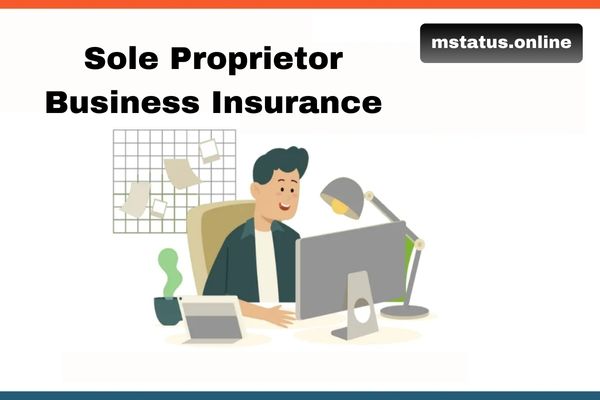As a sole proprietor, your business is not just a source of income; it’s often a reflection of your passion and hard work. However, being the sole owner of your business also means that you carry the weight of all its risks on your shoulders. This is where sole proprietor business insurance comes into play. In this comprehensive guide, we’ll explore the various types of insurance available, their importance, and how to choose the right coverage for your business.
Understanding Sole Proprietorship
What is a Sole Proprietorship?
A sole proprietorship is the simplest form of business ownership. It is owned and operated by a single individual, making it easy to set up and manage. Sole proprietors have complete control over their business operations and are personally liable for any debts or legal actions against their business.
Benefits and Challenges
While the flexibility and simplicity of a sole proprietorship are appealing, they come with inherent risks. Sole proprietors are personally responsible for all aspects of the business, which can expose them to significant financial risk in case of unforeseen events.
The Importance of Business Insurance for Sole Proprietors
Why You Need Business Insurance
- Personal Liability Protection: Without insurance, your personal assets are at risk if your business faces legal issues or debts.
- Risk Management: Insurance helps mitigate financial losses from unforeseen events such as accidents, natural disasters, or lawsuits.
- Professional Credibility: Having insurance can enhance your business’s credibility, reassuring clients and customers that you are a professional entity.
Types of Business Insurance for Sole Proprietors
Understanding the different types of insurance available can help you make informed decisions about your coverage. Below is a list of common types of business insurance suitable for sole proprietors:
| Type of Insurance | Description |
|---|---|
| General Liability Insurance | Protects against claims of bodily injury, property damage, and personal injury. |
| Professional Liability Insurance | Covers claims of negligence, errors, or omissions in professional services. |
| Business Owner’s Policy (BOP) | Combines general liability and property insurance at a discounted rate. |
| Commercial Auto Insurance | Required if you use a vehicle for business purposes. |
| Property Insurance | Protects your business property, including equipment and inventory. |
| Workers’ Compensation Insurance | Required if you have employees; covers work-related injuries. |
| Cyber Liability Insurance | Protects against data breaches and cyberattacks. |
Choosing the Right Business Insurance
Assessing Your Needs
Before you purchase insurance, it’s essential to assess your business’s specific risks. Consider the following factors:
- Nature of Your Business: Different businesses face different risks. For example, a consultant might need professional liability insurance, while a retail store would prioritize property insurance.
- Assets at Risk: Evaluate the value of your business assets, such as equipment, inventory, and intellectual property.
- Client Requirements: Some clients may require proof of insurance before engaging in business with you.
Comparing Insurance Providers
Once you understand your needs, it’s time to compare insurance providers. Here are some steps to follow:
- Research Reputable Insurers: Look for insurance companies with strong reputations and positive customer reviews.
- Request Quotes: Obtain quotes from multiple insurers to understand the cost of coverage.
- Read the Fine Print: Carefully review the policy details, including exclusions and limits.
Customizing Your Coverage
Every business is unique, and so are its insurance needs. Consider customizing your coverage to ensure comprehensive protection. You may need to combine several types of insurance or add endorsements to your policy.
Cost of Business Insurance for Sole Proprietors
Factors Influencing Insurance Premiums
The cost of business insurance can vary widely based on several factors:
- Type of Business: High-risk businesses typically pay higher premiums.
- Location: Insurance costs can differ based on state regulations and local market conditions.
- Coverage Limits: Higher coverage limits usually result in higher premiums.
- Claims History: A history of previous claims can lead to increased premiums.
Average Costs
While costs can vary, here’s a rough estimate of annual premiums for common types of business insurance:
| Type of Insurance | Average Annual Premium |
|---|---|
| General Liability Insurance | $400 – $3,000 |
| Professional Liability Insurance | $300 – $2,000 |
| Business Owner’s Policy (BOP) | $500 – $3,000 |
| Cyber Liability Insurance | $1,000 – $7,000 |
| Workers’ Compensation Insurance | $500 – $2,000 per employee |
Claims Process for Sole Proprietors
Steps to File a Claim
In the unfortunate event that you need to file a claim, follow these steps to ensure a smooth process:
- Notify Your Insurer: Contact your insurance provider as soon as possible to report the incident.
- Document Everything: Gather all relevant documents, including photographs, receipts, and witness statements.
- Complete the Claim Form: Fill out the necessary forms provided by your insurer.
- Follow Up: Keep in touch with your insurer to track the status of your claim.
Common Claims Scenarios
Sole proprietors may encounter various claims, including:
- Slip and Fall Accidents: If a customer is injured on your premises.
- Professional Errors: Mistakes made while providing a service.
- Property Damage: Damage to your business equipment or inventory.
Conclusion
Sole proprietor business insurance is not just an added expense; it’s an essential investment in your future. By understanding the risks associated with your business and choosing the right coverage, you can protect your assets and ensure the longevity of your enterprise. Remember, the right insurance not only safeguards your business but also provides peace of mind, allowing you to focus on what you do best—growing your business.
